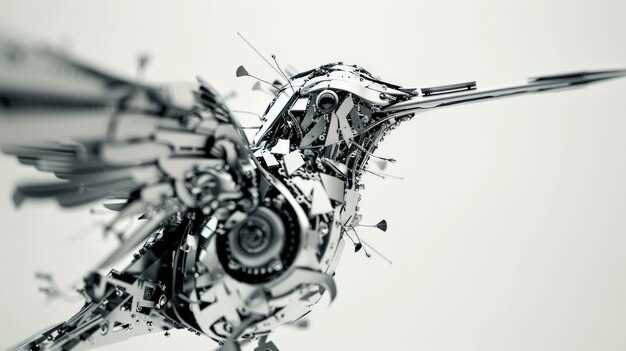Understanding Fiat’s TwinAir Engine Technology

The Fiat TwinAir engine technology represents a significant advancement in automotive engineering, blending efficiency with performance in a compact format. This innovative engine design utilizes a unique two-cylinder layout that not only reduces weight but also enhances fuel efficiency. With the rising demand for sustainable driving solutions, the TwinAir engine stands out as a prime example of how tech can revolutionize traditional automotive practices.
One of the most compelling features of the TwinAir engine is its ability to deliver exceptional torque and power despite its smaller displacement. This characteristic is vital for urban driving, where quick acceleration and responsive handling are essential. Furthermore, the engine’s advanced turbocharging system maximizes performance without compromising on emissions, aligning with modern environmental standards.
Incorporating state-of-the-art engineering, the TwinAir engine utilizes features such as direct fuel injection and variable valve timing. These technologies work in tandem to optimize combustion, ensuring that each drop of fuel contributes to both performance and sustainability. As we delve deeper into the mechanics of Fiat’s TwinAir engine, it becomes clear that this tech-savvy solution is paving the way for a new era of automotive excellence.
Analyzing the Fuel Efficiency of TwinAir Engines in Urban Settings

The Fiat TwinAir engine technology demonstrates remarkable fuel efficiency, particularly in urban environments where driving conditions vary constantly. This section delves into how TwinAir engines optimize fuel consumption while maintaining performance in city driving.
Key factors contributing to the fuel efficiency of TwinAir engines in urban settings include:
- Turbocharging: The TwinAir’s turbocharged configuration allows the engine to generate more power from a smaller displacement. This characteristic ensures adequate acceleration without requiring excessive fuel input.
- Two-Cylinder Design: With only two cylinders, the TwinAir engine is lighter and less complex than traditional engines. This design reduces internal friction and losses, leading to better fuel utilization.
- Variable Geometry Turbo: The use of variable geometry turbocharging enables the engine to adapt to different driving scenarios. This flexibility enhances performance during stop-and-go traffic, which is common in urban driving.
- Start-Stop Technology: TwinAir engines often incorporate start-stop systems that automatically shut off the engine during prolonged idling. This feature conserves fuel and reduces emissions in urban settings.
In addition to these technical features, real-world fuel efficiency can be influenced by various external factors:
- Traffic Patterns: Urban areas often experience heavy traffic congestion, which can lead to frequent acceleration and braking. The TwinAir’s responsive nature allows for better fuel economy under these conditions.
- Driver Behavior: Eco-driving techniques, such as smooth acceleration and maintaining optimal speed, can significantly enhance fuel efficiency. TwinAir engines are designed to facilitate such practices.
- Vehicle Weight: The overall weight of the vehicle plays a crucial role in fuel consumption. Fiat optimizes the weight of vehicles equipped with TwinAir engines to maximize efficiency.
In conclusion, the Fiat TwinAir engine technology stands out in urban environments through its innovative features that enhance fuel efficiency. By combining advanced engineering with practical driving solutions, TwinAir engines offer a compelling option for urban commuters seeking economical performance.
Understanding the Performance Metrics of Fiat TwinAir Technology
The Fiat TwinAir engine technology is renowned for its innovative approach to performance while maintaining excellent fuel efficiency. One of the primary performance metrics associated with TwinAir engines is their power-to-weight ratio. This ratio is significantly optimized due to the engine’s compact size and lightweight design, which results in improved acceleration and overall responsiveness.
Horsepower and torque are critical metrics that define the capabilities of the TwinAir engine. The TwinAir typically delivers around 85 to 105 horsepower, depending on the variant, along with a substantial amount of torque, peaking at low RPMs. This characteristic enables the engine to provide a dynamic driving experience, ensuring that drivers can enjoy spirited performance even in urban environments.
Another essential aspect of TwinAir technology is its fuel efficiency. The engine is designed with advanced technologies, such as turbocharging and direct fuel injection, which contribute to lower fuel consumption rates. Drivers can experience significant reductions in fuel usage without compromising on power, making the TwinAir a viable option for eco-conscious consumers.
The emissions performance of the Fiat TwinAir engine also sets it apart in the automotive market. With lower CO2 emissions compared to traditional engines, the TwinAir complies with stringent environmental regulations, making it an attractive choice for environmentally-friendly motoring. This combination of lower emissions and high performance showcases Fiat’s commitment to sustainable engineering.
Finally, the overall driving dynamics offered by the TwinAir engine are enhanced by its smooth and responsive power delivery. This is particularly noticeable in stop-and-go traffic situations, where the engine’s characteristics shine, providing a seamless driving experience. In summary, understanding the performance metrics of Fiat TwinAir technology reveals an impressive balance between power, efficiency, and environmental responsibility.
Evaluating the Environmental Impact of TwinAir Engine Emissions

The Fiat TwinAir engine technology has garnered significant attention not only for its innovative design but also for its potential environmental benefits. One of the primary advantages of the TwinAir engine is its reduced emissions compared to conventional engines. This reduction plays a crucial role in lowering the overall environmental footprint of vehicles equipped with this technology.
By utilizing a turbocharged, two-cylinder layout, the TwinAir engine delivers high performance while maintaining low CO2 emissions. The efficient combustion process minimizes unburned hydrocarbons and nitrogen oxides, which are common pollutants produced by traditional engines. Consequently, vehicles with TwinAir engines often achieve better fuel efficiency, leading to decreased greenhouse gas emissions during operation.
Another essential aspect of evaluating the environmental impact is the use of advanced technologies in the TwinAir engine. Features such as Start&Stop technology and MultiAir (which optimizes intake valve lift) contribute to improved fuel economy and reduced emissions. These innovations enable the engine to adapt its performance based on driving conditions, further enhancing its eco-friendliness.
However, it is also vital to consider the entire lifecycle of the TwinAir engine. Manufacturing processes, materials used, and the end-of-life disposal of vehicles have an impact on overall sustainability. Efforts to minimize the carbon footprint in these areas are crucial for ensuring that the benefits of reduced emissions are not offset by environmental costs elsewhere in the lifecycle.
In summary, while the TwinAir engine presents advancements that contribute to lower emissions and better fuel efficiency, it is essential to take a holistic approach when assessing its environmental impact. By integrating innovative design, advanced technologies, and sustainable manufacturing practices, the TwinAir engine represents a significant step forward in the pursuit of greener automotive solutions.



